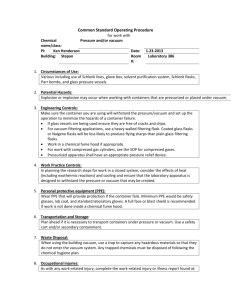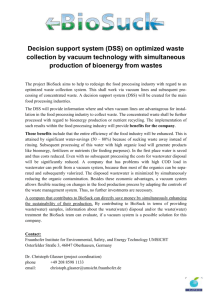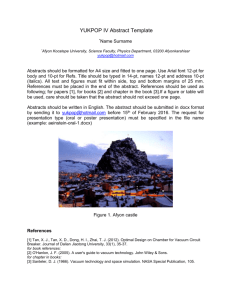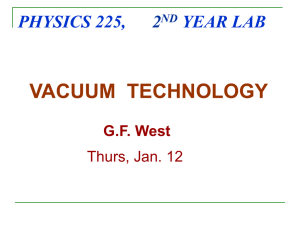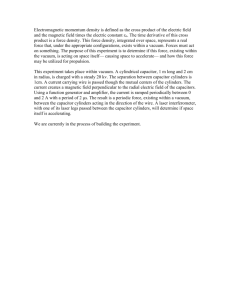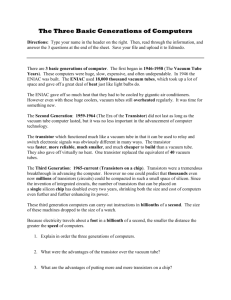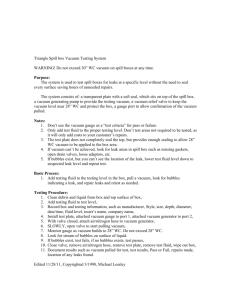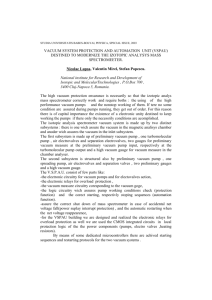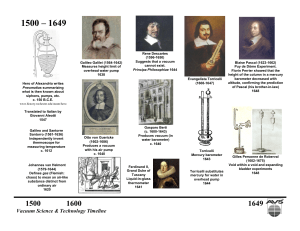THIN FILM PHYSICS (6hp)
advertisement
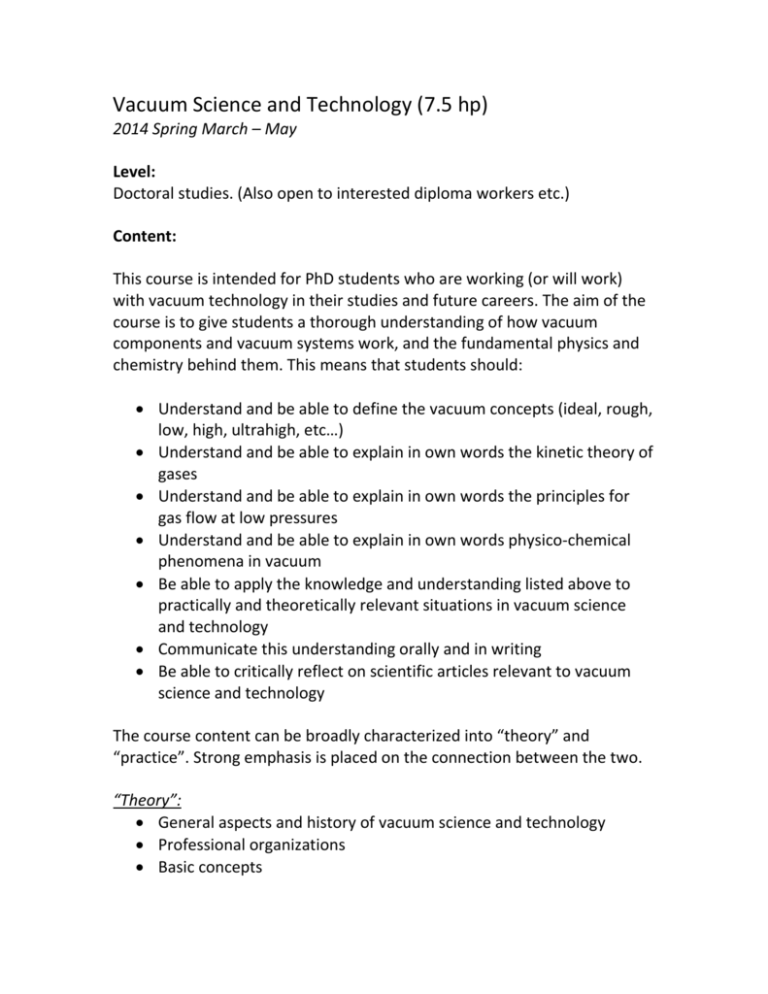
Vacuum Science and Technology (7.5 hp) 2014 Spring March – May Level: Doctoral studies. (Also open to interested diploma workers etc.) Content: This course is intended for PhD students who are working (or will work) with vacuum technology in their studies and future careers. The aim of the course is to give students a thorough understanding of how vacuum components and vacuum systems work, and the fundamental physics and chemistry behind them. This means that students should: Understand and be able to define the vacuum concepts (ideal, rough, low, high, ultrahigh, etc…) Understand and be able to explain in own words the kinetic theory of gases Understand and be able to explain in own words the principles for gas flow at low pressures Understand and be able to explain in own words physico-chemical phenomena in vacuum Be able to apply the knowledge and understanding listed above to practically and theoretically relevant situations in vacuum science and technology Communicate this understanding orally and in writing Be able to critically reflect on scientific articles relevant to vacuum science and technology The course content can be broadly characterized into “theory” and “practice”. Strong emphasis is placed on the connection between the two. “Theory”: General aspects and history of vacuum science and technology Professional organizations Basic concepts The kinetic theory of gases as applied to vacuum science and technology Gas flow at low pressures Physico-Chemical phenomena in vacuum (Evaporation, condensation, solubility, permeation, adsorption, absorption, desorption) “Practice”: Pumping – general aspects and an overview of different types of pumps Pumping – physics and principle of operation of common pumps Measurement of low pressure - Direct and indirect gauges and the physics behind them Materials and sealing techniques Vacuum systems Litterature: John F. O’Hanlon, A User’s Guide to Vacuum Technology, Wiley, 2003 (3rd edition), and additional handouts. (Note: Literature may be subject to revision) Examiner: Per Eklund perek@ifm.liu.se Organization: The course is examined by a combination of continuous examination in connection with the lectures and home examination, which also contains an assignment connecting the course content to the laboratory work of the students. The continuous examination is not mandatory, but gives credits for the home examination. The mandatory parts of the course are examined through peer review and an ending seminar. Details are provided in the course information. Course homepage: No. But check out: www.iuvsta.org (IUVSTA) www.vakuumsallskapet.se (Svenska Vakuumsällskapet) www.avs.org (American Vacuum Society)

